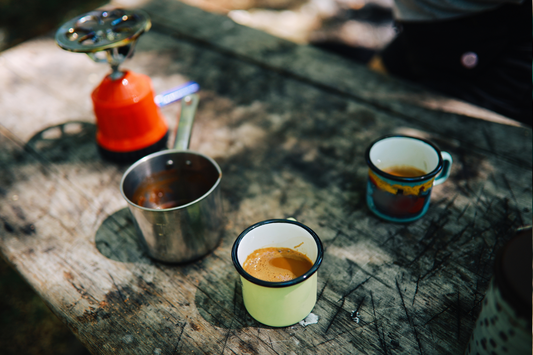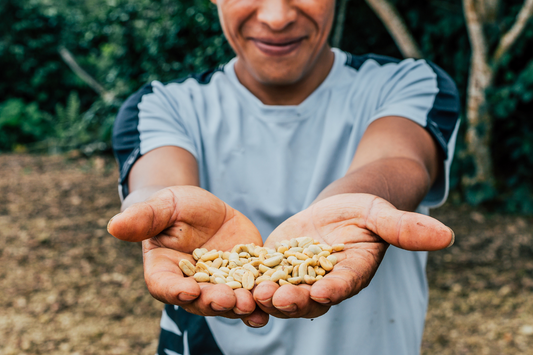Share
"Which Espresso Machine Should I Get?"
It's the question we get all the time, and our answer is always the same: "it depends." Your perfect machine really comes down to your unique circumstances.
If you're diving into the world of espresso for the first time, you know the marketing jargon, endless features, and wildly different price tags can feel pretty overwhelming. After all, we're just making coffee, right?
In this article, we simplify the process by breaking home espresso machines into three distinct categories, explain who they're best for and then recommend some tried and true models for each.
Aspiring Home Baristas: Semi-Automatic Machines
This is what most folks picture when thinking about home espresso machines. They offer the full barista experience and, in most cases, what you’ll see in most cafes. These machines are ideal for the coffee enthusiast who wants control over what matters most and the ability to make a full menu of mixed milk drinks from home (i.e., lattes, cappuccinos, etc.).
Semi-automatics offer the ability to steam milk, control the temperature of the water, start extractions with the click of a button or activation of a lever, and in some cases, allow for pre-programmed shot times (i.e., double versus single) and hands-free steaming. With traditional boxy shapes, portafilters, and steam wands, semi-automatic machines are a joy to use and relatively easy to learn.
This category comes in three different boiler configurations:
Single Boiler:
Most common and affordable, single boiler machines are exactly as they sound. They have one boiler (kettle) that heats up the water for both steaming and espresso making – the downside of these machines is that you will have to wait longer between shots and steaming milk, as well as experience lower temperature stability. Often equipped with loud, cheap vibratory pumps, these machines are great for 1-4 shots a day, small families, and those who don’t always have milk drinks.

Our Recommendation: Gaggia Classic Pro
Heat Exchanger:
Slightly more premium, heat exchangers also operate with a single but much larger boiler that allows for simultaneous milk steaming and espresso making, offering the ability to make back-to-back drinks with incredible steam power. These machines are great for people looking to produce a lot of milk-based drinks but are less concerned with ultimate espresso quality, as they can lack temperature stability and also tend to use loud vibratory pumps.

Our Recommendation: Lelit Mara X
Dual Boiler:
The gold standard for making espresso, dual boilers offer exceptional temperature stability, drink capacity, simultaneous milk texturing and extraction, silent operation, and powerful steaming. On the top end of the budget, many feel dual boilers are worth every penny, as these machines are essentially scaled-down commercial espresso machines. Because you have two independent boilers, with one dedicated to steaming and the other to extraction, you can make drink after drink, faster and at more consistent temperatures. Often equipped with rotary pumps, many of these machines have the ability to be plumbed into a home waterline or refillable jug – no refilling of tanks, just making espresso.

Our Recommendation: Breville Dual Boiler
For Tinkerers & Purists: Manual Machines
Manual machines are great for enthusiasts who want control over every aspect of their shot extraction to produce the “perfect” shot. Often very affordable, manual espresso users instead invest extra time, effort, and often coffee, in order to produce 1-3 shots per day. Often fully mechanical, these machines lack the ability to steam milk, boil water, or create pressure on their own; you have to perform every input yourself.
The reward for all that effort? The ability to produce espresso shots comparable to machines up to 20 times their price point – but they can only produce espresso and lack the ability to dispense water for americanos or steam milk for mixed drinks.
A typical espresso-making process consists of the following steps:
- Manually preheating the brew chamber (adding boiling water and discarding it)
- Weighing, dosing, and grinding your coffee (can be solved with a grind-by-time grinder)
- Distributing and tamping your shot
- Filling the brew chamber with off-boil water
- Locking in the portafilter
- Manually pulling down on a lever or arm to create pressure (go by feel)
- Stopping the extraction once the shot has reached your desired weight (measured or eyeballed)
- Discarding leftover water from the machine.
The bottom line: If you’re a single coffee enthusiast who loves to geek out, coffee is a daily ritual for you, and you only drink espressos or americanos – this might be the option for you! You’ll save a significant amount of money and get to explore advanced espresso concepts and drink exceptional coffee with little extra legwork.

Our Recommendation: Cafelat Robot
For The Busy Professional: Super-Automatic Machines
In terms of automation, super-automatic machines take things a step further, integrating a grinder, espresso machine, and sometimes even a milk fridge all into one unit. These units are the least involved, requiring little to no time, effort, or knowledge to produce pretty darn good "espresso,” often even equipped with a self cleaning function. We say "espresso" in quotes because of how these machines achieve pressure and the size of the final shot—more on this later.
What normally takes a dozen steps is simplified to a one- or two-button experience, automating your entire espresso workflow from grinding, dosing, distribution, tamping, and shot timing to sometimes even milk steaming. Select your preferred "espresso"-based beverage from the menu, and you’re off to the races!
On a technical level, semi-automatics make "espresso-like" beverages in that they rarely produce 9 bars of pressure from the water resistance against finely ground coffee. Rather, these machines tend to utilize a "pressurized basket," essentially pushing water through a small hole to replicate the resistance created by precisely ground, fine coffee. Pressurized baskets are great as they allow folks to use store-bought pre-ground coffee that is otherwise too coarse for a regular machine.
You also typically get a lungo, a higher volume shot of espresso that is usually between 50-100ml yield with a thick layer of crema produced primarily through the pressurized basket.
In practice, most folks will find the flavor and texture marginally different but still quite satisfying. For most, the simplicity of operation, time savings, and low barrier to entry to make virtually all of your favorite drinks are well worth the minor sacrifice to shot quality.

Our Recommendation: Jura Impressa E6



